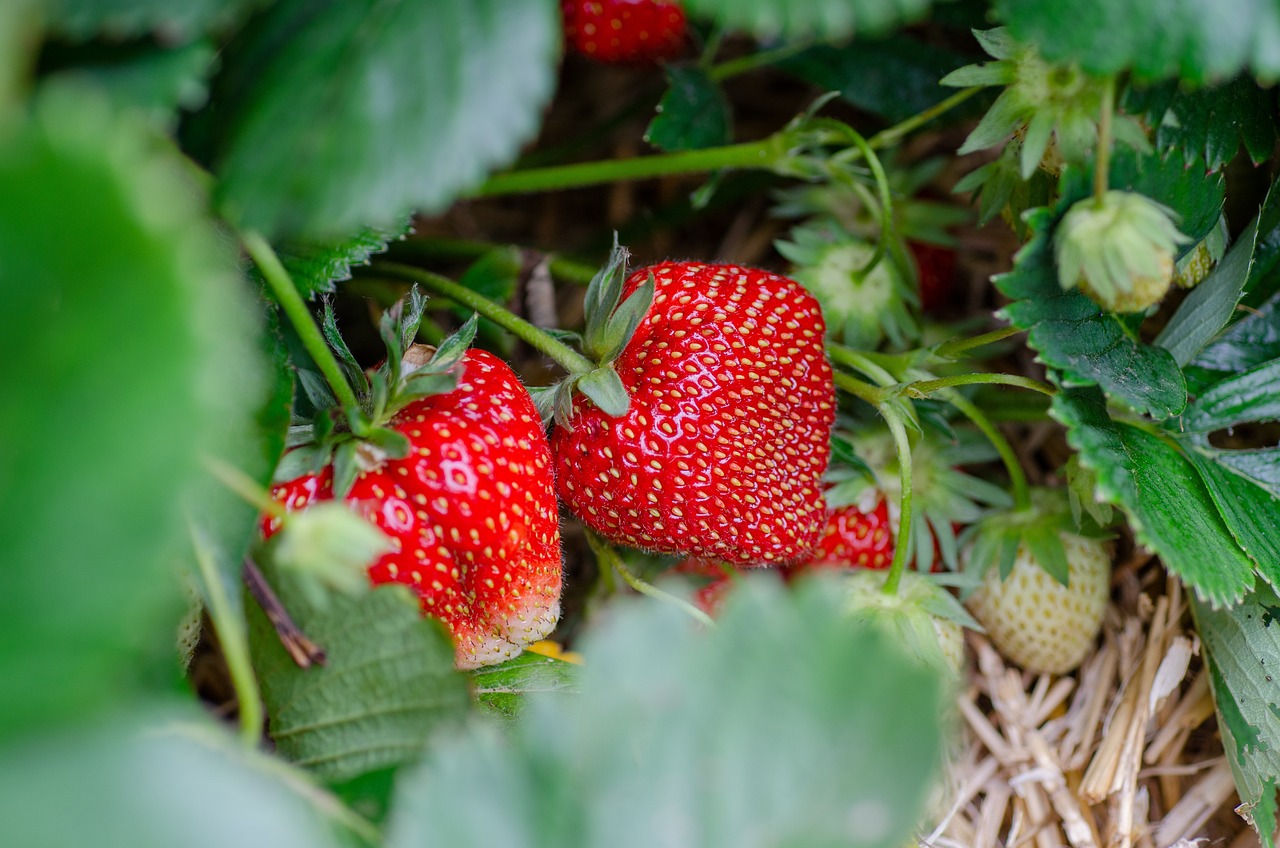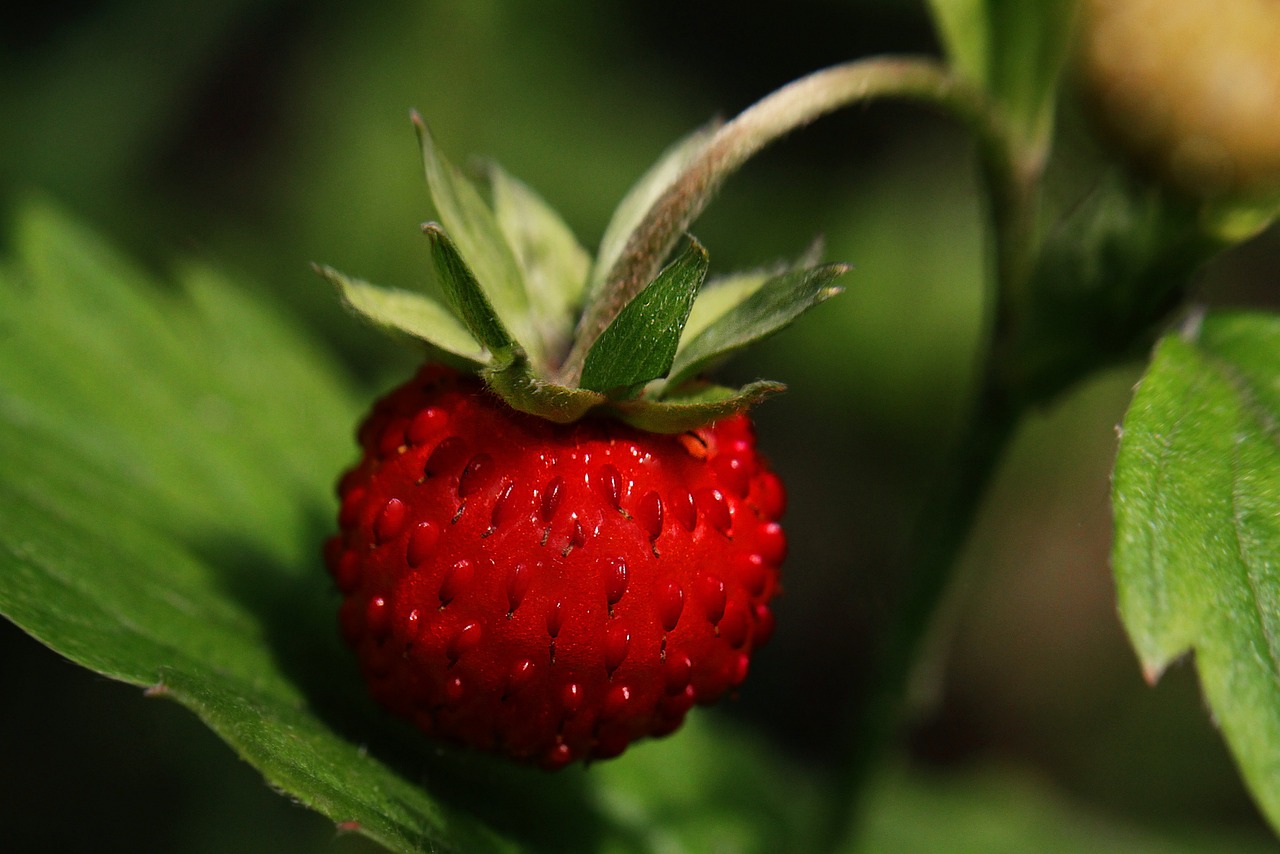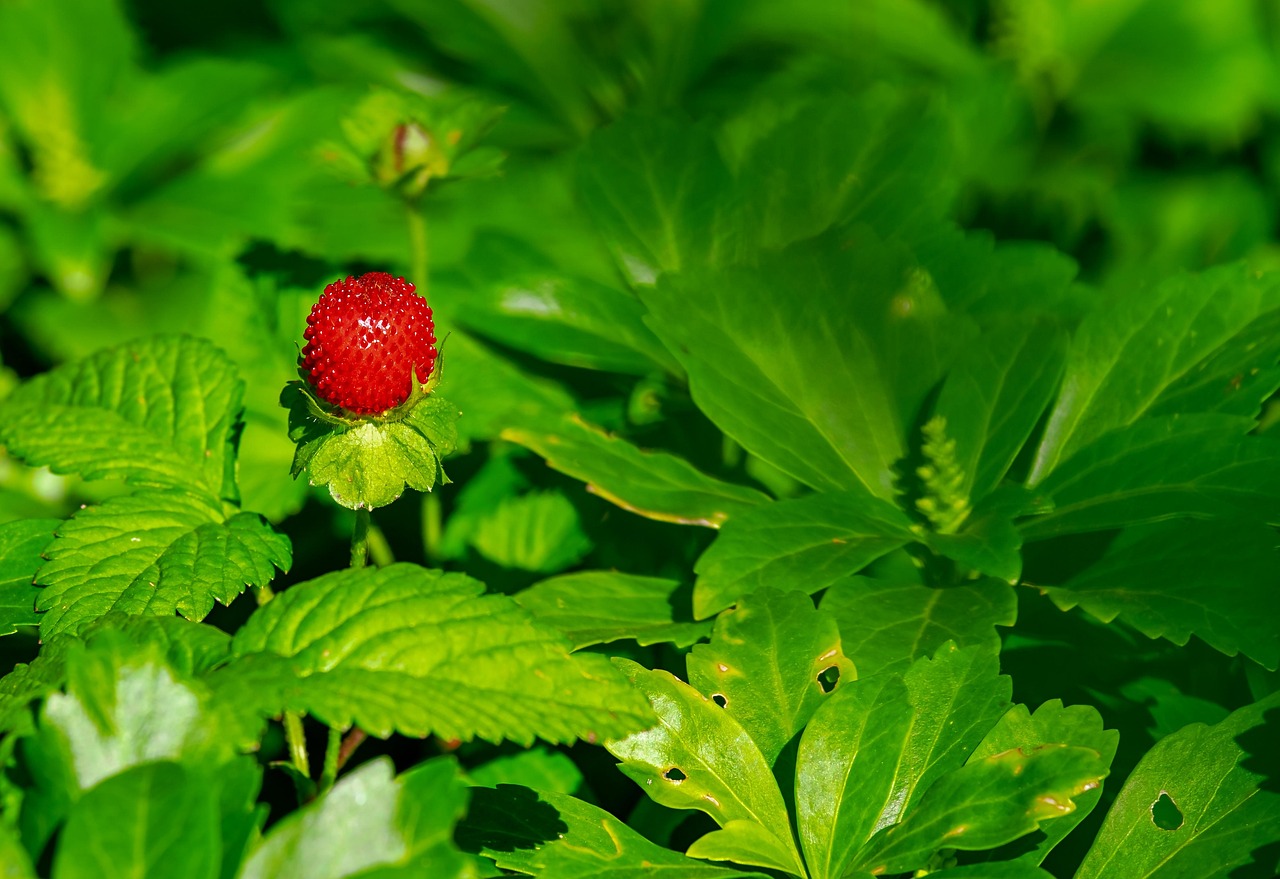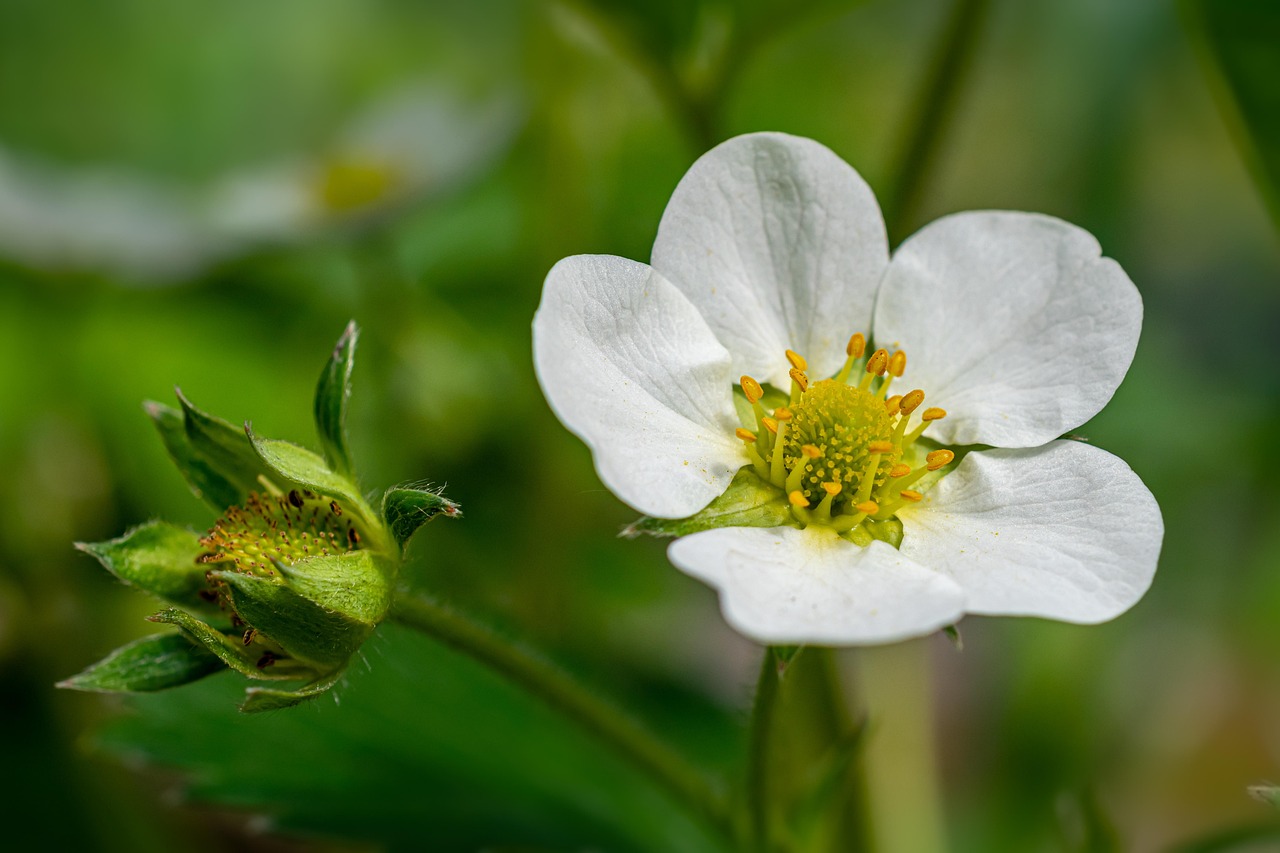To ensure healthy container strawberries, select a large pot with drainage holes, use high-quality potting soil, and maintain consistent moisture without overwatering. Fertilize regularly with a balanced fertilizer and provide ample sunlight, aiming for at least six hours of direct light daily.
Understanding Strawberry Plants

Strawberries are among the most popular fruits grown in home gardens. Their sweet flavor and versatility make them a favorite for many. Growing strawberries in containers offers several advantages, including better control over soil quality, ease of mobility, and the ability to manage pests more effectively. Container gardening is an excellent option for those with limited space or poor soil quality.
Container-grown strawberries can be just as productive as those planted in the ground. However, they do require specific care to thrive. Factors such as pot size, soil type, watering needs, and exposure to sunlight play crucial roles in the health and productivity of strawberry plants.
Choosing the Right Container
The first step in successful container strawberry gardening is selecting an appropriate pot. Containers should be at least 12 inches deep and wide to allow enough room for root growth. The material of the container can also affect plant health. Here are some popular options:
- Plastic Pots: Lightweight and easy to move, plastic pots retain moisture well but may heat up quickly in direct sunlight.
- Terracotta Pots: These porous containers allow for good airflow and moisture evaporation but can dry out faster.
- Wooden Planters: Aesthetic and sturdy, wooden containers can provide good insulation for roots but should be lined to prevent soil loss.
Soil Requirements
Using the right soil mix is essential for healthy strawberry plants. A well-draining potting mix rich in organic matter is ideal. This ensures that the roots receive adequate nutrients while preventing waterlogging. Consider using a blend that includes:
- Peat moss or coconut coir for moisture retention
- Perlite or vermiculite for aeration
- Compost to provide essential nutrients
Watering Practices
Strawberries require consistent moisture but are susceptible to root rot if overwatered. When caring for container strawberries, it is crucial to monitor watering closely. Here are some tips:
- Check the top inch of the soil; if it feels dry, it is time to water.
- Water deeply until it drains from the bottom of the pot.
- Avoid letting the plant sit in saucers filled with water.
Sunlight Needs
Strawberry plants thrive in sunny conditions. They require a minimum of six hours of direct sunlight each day. When positioning your container, consider the following:
- Place containers in a south-facing location for maximum sunlight exposure.
- If growing indoors, consider using grow lights to supplement natural light.
- Rotate containers periodically to ensure even growth on all sides.
Nutritional Needs
Proper fertilization is essential for robust strawberry plants. Use a balanced fertilizer every four to six weeks during the growing season. Organic options include:
- Fish emulsion
- Compost tea
- Granular organic fertilizers specifically designed for fruiting plants
With these practices in mind, you can create an environment where your container strawberries flourish. Each step contributes to their overall health and productivity, ensuring you enjoy a bountiful harvest throughout the growing season.
Managing Pests and Diseases
Growing strawberries in containers can help reduce the risk of some pests and diseases. However, container plants are not immune to these challenges. Proactive management is essential to keep your strawberry plants healthy. Here are common pests and diseases, along with strategies to prevent and treat them:
Common Pests
- Aphids: These small insects suck sap from the leaves, leading to yellowing and stunted growth. Control aphids by introducing natural predators like ladybugs or using insecticidal soap.
- Spider Mites: These pests thrive in dry conditions and can cause leaf discoloration. Increase humidity around your plants and spray them with water to dislodge mites.
- Slugs and Snails: These mollusks can chew holes in leaves. To manage them, create barriers using diatomaceous earth or set out beer traps.
Common Diseases
- Powdery Mildew: This fungal disease appears as a white powdery coating on leaves. Improve air circulation around your plants and avoid overhead watering to prevent its spread.
- Root Rot: Caused by overwatering, this disease leads to wilting and browning of leaves. Ensure your container has proper drainage and allow the soil to dry out slightly between waterings.
- Botrytis Blight: Also known as gray mold, this affects fruits and flowers. To manage it, remove affected parts promptly and avoid wetting foliage during irrigation.
Harvesting Strawberries

Knowing when and how to harvest strawberries is crucial for enjoying their sweet flavor at its best. Timing is essential, as strawberries do not continue to ripen after being picked. Here are some tips for harvesting:
Signs of Ripeness
- The berries should be fully colored, typically bright red depending on the variety.
- The fruit should be firm but slightly soft to the touch, indicating juiciness.
- The green cap leaves should still be attached and appear fresh.
Harvesting Technique
To harvest strawberries, gently grasp the berry with your fingers. Twist slightly to detach it from the stem without damaging the fruit or the plant. Avoid pulling too hard, as this can harm the plant and lead to infections. Place harvested strawberries in a shallow container to prevent bruising.
Seasonal Care Tips
Strawberry plants require different care throughout the seasons. Understanding these seasonal needs helps in maintaining their health and productivity.
Spring Care
- As temperatures rise, check for new growth and remove any dead or damaged leaves.
- Fertilize with a balanced fertilizer as new growth appears.
- Water regularly, ensuring soil remains consistently moist but not soggy.
Summer Care
- Monitor for pests and diseases more closely, especially during hot spells.
- Continue regular watering and fertilization every four to six weeks.
- Provide shade during extreme heat to prevent wilting.
Fall Care
- After the last harvest, trim back any dead foliage and clean around the plants.
- If frost is expected, consider moving containers indoors or covering them with protective cloths.
- Add a layer of mulch to insulate roots during colder months.
Winter Care
If you live in an area with cold winters, protecting your container strawberries is vital. Consider these practices:
- Move containers to a sheltered location or indoors if possible.
- Add insulation around pots using burlap or bubble wrap.
- Avoid watering during freezing temperatures; check moisture levels periodically.
Caring for container strawberries involves attention to detail across various aspects of growth. By managing pests, understanding harvesting techniques, and providing seasonal care, you can ensure that your strawberries thrive all year round.

Propagation Techniques for Container Strawberries
Propagation allows gardeners to create new strawberry plants from existing ones. This can be an economical way to expand your garden while ensuring that you maintain desired plant traits. There are several methods to propagate strawberries, including runners, division, and seeds.
Using Runners
Strawberry plants naturally produce runners, which are long stems that grow horizontally from the mother plant. These runners can root themselves in the soil, giving rise to new plants. Here’s how to propagate using runners:
- Identify healthy runners that develop small plantlets at their tips.
- Guide the runner to the soil surface in a separate container and secure it with a small stake or soil.
- Water the runner gently to encourage rooting. After a few weeks, once roots have developed, cut the runner from the mother plant.
Dividing Established Plants
Another effective method for propagation is dividing established plants. This technique is usually performed in early spring or fall when plants are not actively fruiting. Follow these steps:
- Carefully remove the plant from its container, taking care not to damage the roots.
- Gently separate the plant into several sections, ensuring each section has roots and foliage.
- Replant each section into new containers filled with quality potting mix.
Growing from Seeds
While growing strawberries from seeds can be more challenging, it is also a rewarding method. Here’s how to grow strawberries from seeds:
- Purchase high-quality strawberry seeds or collect seeds from mature strawberries.
- Sow seeds in a seed-starting mix, covering them lightly with soil.
- Maintain consistent moisture and provide warmth; strawberry seeds typically require light to germinate.
- Transplant seedlings into larger containers once they have a few sets of true leaves.
Choosing the Right Strawberry Varietals for Containers

Selecting the right variety of strawberries is crucial for successful container gardening. Different varieties thrive under different conditions and have varying growth habits. Here are some popular types well-suited for container growth:
June-Bearing Varieties
June-bearing strawberries produce a single crop each year, typically in late spring or early summer. They are known for their large fruit size and high yields. Popular June-bearing varieties include:
- Chandler: Produces sweet, large berries and is known for its excellent flavor.
- Honeoye: Early-season variety with robust plants and good disease resistance.
Everbearing Varieties
Everbearing strawberries produce fruit throughout the growing season, making them ideal for continuous harvests. Some notable everbearing varieties are:
- Quinault: Offers sweet berries with a rich flavor and can produce fruit in both spring and fall.
- Seascape: Known for its adaptability, it produces consistently throughout the growing season.
Day-Neutral Varieties
Day-neutral strawberries flower and set fruit regardless of day length. They are perfect for regions with varied light conditions and include:
- Tristar: Produces small to medium-sized berries with excellent flavor and is resistant to diseases.
- Albion: Known for its large, firm berries with a sweet taste, suitable for both fresh eating and processing.
Container Strawberry Care Throughout the Year
The care of container strawberries varies throughout the year. Understanding these seasonal requirements ensures that your plants remain healthy and productive.
Spring Care Tips
- Check for any winter damage and prune dead leaves or stems.
- Fertilize with a slow-release organic fertilizer to promote healthy growth.
- Monitor watering closely as temperatures begin to rise.
Summer Care Tips
- Ensure consistent watering, especially during hot spells.
- Add mulch to retain moisture and keep roots cool.
- Pest management becomes crucial; regularly inspect plants for signs of infestation.
Fall Care Tips
- After harvesting, reduce watering slightly as plants enter dormancy.
- Add compost or mulch around the base of the plants to protect roots during colder months.
- If frost is expected, take measures to protect your containers, such as moving them indoors or covering them.
This detailed understanding of propagation techniques, varietal selection, and year-round care will help ensure your container strawberries thrive and yield delicious fruit season after season.
Additional Tips for Thriving Container Strawberries
Growing strawberries in containers is rewarding, but success often hinges on a few additional factors. Here are some extra tips to enhance the health and productivity of your container strawberries:
Choosing the Right Location
Location plays a pivotal role in the success of container strawberry gardening. Consider the following when selecting a spot:
- Ensure the area receives adequate sunlight for at least six hours a day.
- Choose a location that offers some protection from harsh winds which can dry out plants.
- Avoid areas with standing water or excessive shade that can lead to poor growth and increased disease risk.
Regular Maintenance Practices
Regular maintenance is key to thriving plants. Here are some practices to consider:
- Deadheading: Remove spent flowers to promote new growth and increase fruiting.
- Weeding: Keep the area around your containers free from weeds that compete for nutrients and water.
- Soil Testing: Periodically test your soil pH and nutrient levels to ensure optimal growing conditions.
Consider Companion Planting
Companion planting can enhance the growth of strawberries. Consider interplanting with:
- Basil: This herb can help repel pests like aphids and spider mites.
- Marigolds: Known for deterring harmful nematodes, marigolds can improve the overall health of your container garden.
- Garlic: Planting garlic alongside strawberries may help reduce pest populations.
Utilizing Vertical Space
If space is limited, consider vertical gardening techniques for strawberries. Options include:
- Pyramid Planters: These structures allow for multiple layers of strawberry plants.
- Hanging Baskets: Ideal for trailing strawberry varieties, hanging baskets can be a decorative and effective way to grow strawberries.
- Tiered Shelves: Use shelves to create a multi-level growing space, maximizing sunlight exposure and air circulation.
Final Thoughts
Caring for container strawberries requires attention to detail and a commitment to maintaining optimal growing conditions. By understanding their specific needs regarding watering, sunlight, soil, and nutrition, you can cultivate healthy plants that will produce delicious fruit. Additionally, effective pest management and seasonal care will help protect your investment and ensure a bountiful harvest.
The joy of growing strawberries in containers lies in their accessibility and productivity. With the right techniques, you can enjoy fresh strawberries straight from your garden, no matter the size of your living space. Whether you are a seasoned gardener or a beginner, following these tips will set you on the path to successful container strawberry gardening.
As you embark on your journey with container strawberries, remember to experiment and adapt these practices to fit your unique environment. Happy gardening!
